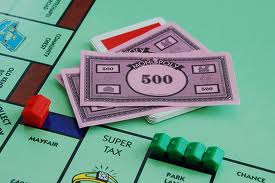 According to the dictionary the definition of Marketing is:
According to the dictionary the definition of Marketing is:
The total of activities involved in the transfer of goods from the producer or seller to the consumer or buyer, including advertising, shipping, storing, and selling.
Now, this definition is NOT what I would use to define marketing. If I had to sum up “successful marketing” into a sentence, this is what I’d say:
“The strategic planning, implementation and testing of a mixture of business activities intended to educate your customer and prospects to understand, appreciate and desire the BENEFITS that your product or service gives them which convinces them to buy from only you.”
You’ll notice that my definition outlines 3 important steps: Planning, Implementation and Testing.
Planning: In order for your marketing to be successful, there is a lot of planning that must be done. You need to decide which business activities (marketing techniques) should be carried out. In most cases you need do some research so you can decide who you want to target, what medium will you use to reach that group of prospects, what message you want them to receive. Then you need to plan how you will implement the ideas and how you will test and measure the results. There are so many other things that need to be considered when planning, so ensure you really take time to plan. A little planning usually makes a massive difference to the end result.
Implementation: Planning is important, but equally, if not more important is implementation and action. Do what you plan! Write a draft and contact a copywriter, get a graphic artist to put together an advertisement, put together a referral program, re-decorate your shop-front. Planning without implementation is a MASSIVE waste of your time and energy.
Testing: Ensure you have systems in place to measure and test the results of your marketing, have ways to track the number of enquiries that come from an advert, or ways to track how many clients come into your shop each day so you can accurately see the results of an ad. Measure the amount of referrals you get , so you can see if a referral system has made a difference. By measuring and testing, you can ensure that you spend your time, effort and money on the marketing techniques that give you the best return. It also allows you to adjust your advertising in a controlled way so you can actually determine if a minor change (eg, changing a headline) makes the ad work better or worse.
So. What are the “tactics” that you can plan, implement and test? There are various “Marketing Techniques” that you can use to ultimately get your clients to buy from you.
To give you a quick list, here are a few:
- Advertising
Newspaper, Magazine , Business Directory Listings
Flyers / Brochures, Pricelists, Menus.
Vehicle & Shopfront Signage
Business Cards, Postcards, Stationery etc
Other Offline Media (Radio, TV, Etc)
Online Media (Google Ads, Social Media) - Run A Competition
- Create A Referral Program
- Write & Advertise A Guarantee
- Create A Monthly Newsletter
- Create Follow Up Systems
- Survey Your Clients
- Gather Testimonials & Start Using Them
You need to make sure that you have a mixture of the above strategies and make sure your focus on two specific tasks:
- Attracting New Prospects
- Retaining Existing Clients
Many businesses focus too much on number 1, when your existing clients have already used your services, they trust you, you have began to build a relationship with them. – So ensure you nurture that relationship so when they need your “services” again they remember who you are and that you’ve given them a reason to return.


